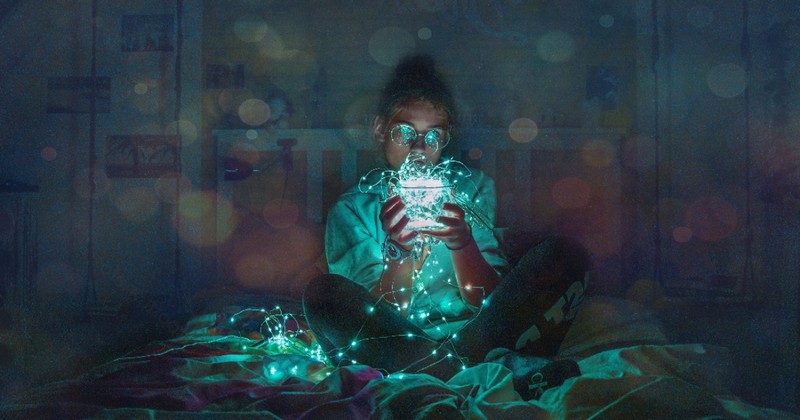Clinophobia (fear of sleeping): causes, symptoms and treatment

This rare phobia has some particularly delicate characteristics.
Clinophobia is an irrational phobia whose sufferers have an unjustified fear of sleep or of the act of going to bed.. This fear can manifest itself as a specific response to resting in bed or, more generically, to falling asleep in any context.
- Article related: "Types of phobias: exploring the disorders of the fear".
What is clinophobia?
This phobia is also often referred to as "oneirophobia" or "somniphobia", although they have distinct nuances. The term clinophobia refers to the fear of going to sleep, and comes from the Greek klinein (bed) and phobos (fear).
Although the fear of going to sleep is not usually a well-known or well-studied disorder, it is a very common phobia that affects people of any age and of any social and cultural background.
As is the case with the vast majority of phobias suffered by human beings, those affected by clinophobia are aware that their fear of going to sleep is unjustified and causes them irrational anxiety. However, they are unable to manage these psychological sensations, they are unable to manage these psychological and physiological sensations produced by their brain in response to the fear, so they enter a cycle of fear.and so they enter a vicious circle.
If this phobia is not treated and is maintained over time, the person can begin to worsen both physically and psychologically, and their well-being is seriously endangered.
Causes
As is the case with most phobias and fears, clinophobia is caused by certain events in the individual's learning process. The associations that the person makes with their environment give rise to their learning history, and in the case of these patients, they may have associated certain negative sensations to the behavior of sleeping or going to bed. This generates fear, anxiety and ends up leading to phobia.
Several traumatic events in childhood can end up leading to this phobia.. For example, a child who wets the bed (enuresis) may develop clinophobia by relating these two events that cause low self-esteem and unpleasant sensations: going to bed to sleep and involuntary urination during sleep.
In adults, having nightmares, bruxism, restless legs syndrome, some type of sleep breathing disorder, and other psychological and medical conditions can also generate clinophobia.
However, the truth is that the most frequent cause of clinophobia is linked to chronic and severe insomnia problems. Also as a result of the psychological association, sufferers link the act of going to sleep with the bad psychological experience of having insomnia, a situation that causes anxiety and thus avoidance.
Symptoms
The symptoms of this phobia usually appear at bedtime, or while in bed, trying to fall asleep. In any case, there are cases in which the simple idea of sleeping can generate anxiety and nervousness..
The most frequent symptoms are agitation, nervousness and discomfort in the moments before going to bed. In more severe cases, sufferers may experience severe anxiety and even panic attacks.
In remote cases, some patients have reported that during the nervous breakdowns associated with clinophobia they may experience symptoms such as heightened senses, even claiming altered states of consciousness.
As in any phobia, fear and anxiety are the two most frequent symptoms. Other symptoms include Nausea and dizziness, agitation, muscle tension, hyperventilation, hot flashes, tremors, dry mouth, vertigo, sweating, confusion... In severe cases, the affected person may fear losing control or even dying in his or her sleep.
Of course, patients also experience a lower quality and quantity of sleep, and this phobia can correlate with medical problems, such as insomnia, apathy, reduced quality of life... In this sense, it should be noted that insomnia can be the cause of the problem as well as a consequence of the phobia.
Treatment and therapy
Clinophobia is a phobic disorder in which a series of persistent symptoms appear, linked to fear and anxiety, as well as to the effects of these symptoms.as well as to the effects that these generate in the quality and quantity of the sleep. Therefore, it is also frequently associated with insomnia problems.
In this sense, the different therapeutic approaches seek to combat the phobia from different sides. Let's get to know some of the most frequently used forms of therapy and tools for the treatment of clinophobia.
Techniques to manage anxiety
It is becoming more and more common for people to practice relaxation techniques. Some of them are really simple and have magnificent effects on anxiety management. Both breathing techniques and other techniques proposed by psychologists have had a special interest in this area.
2. Psychoeducation
If the patient is fully aware of the psychological and physiological mechanisms behind his irrational fear, it will be easier for him to understand the ways available to him to reduce his discomfort and fear.
With this tool, the patient is able to understand the causes of the phobia, how it has been generated, what factors limit him/her to overcome it, and a number of psychological tips to manage it. and a good number of psychological tips to manage it. To this end, the patient should be provided with all the relevant information related to the clinophobia.
3. Systematic desensitization
Another effective technique for treating specific phobias is systematic desensitization. This is a combination of relaxation techniques with the gradual approach to the object, situation or context that causes the phobia.
This technique helps to be able to go to bed without the presence of anxiety and bad feelings that used to be present in the past. and bad feelings that used to be associated with this behavior.
(Updated at Apr 12 / 2024)